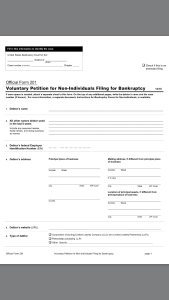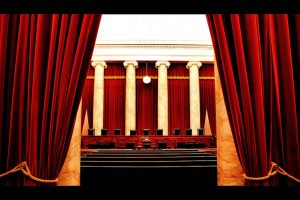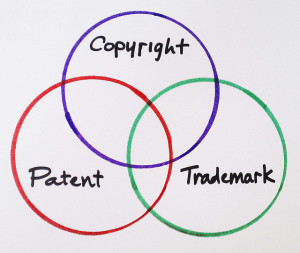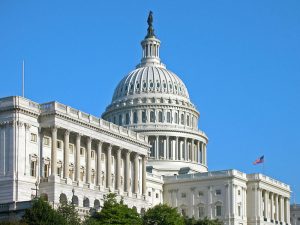My how time flies in protracted bankruptcy litigation. More than four years ago, as I reported back at the time, the Bankruptcy Court in the Chapter 15 cross-border bankruptcy case of Qimonda AG issued its first decision on the application of Section 365(n) in that case. After an initial appeal, a four-day trial on remand, and another appeal, last week the U.S. Court of Appeals for the Fourth Circuit issued a major decision that may bring the litigation to a close.
Even if you are not a Chapter 15 bankruptcy aficionado, this decision has important implications for licensees of intellectual property, especially when the IP owner is a foreign entity.
Before diving into the Fourth Circuit’s decision and examining where the decision leaves licensees, let’s first take a look at Section 365(n), Chapter 15, and the long and winding road that led to the Fourth Circuit’s decision. Or, if so inclined, you can just jump to the discussion of the Fourth Circuit’s decision and where it leaves licensees, found toward the end of this post.
Section 365(n) And Licensee Rights. Section 365(n) was added to the Bankruptcy Code to protect licensees of intellectual property in the event the licensor files bankruptcy.
- Under Section 365(n), if the debtor or trustee rejects a license, a licensee can elect to retain its rights to the licensed intellectual property, including a right to enforce an exclusivity provision. In return, the licensee must continue to make any required royalty payments.
- The licensee also can retain rights under any agreement supplementary to the license, which should include source code or other forms of technology escrow agreements.
- Taken together, these provisions protect a licensee from being stripped of its rights to continue to use the licensed intellectual property.
- For more on Section 365(n)’s benefits and protections, follow the link in this sentence.
Limits Of Section 365(n). These protections, however, have their limits. One is that the Bankruptcy Code’s special definition of “intellectual property” excludes trademarks from the scope of Section 365(n)’s protections (although at least one recent decision may have opened an alternative path for trademark licensees to retain their rights). Another is that Section 365(n) is in the U.S. Bankruptcy Code and applies only in a U.S. bankruptcy case. Most other countries do not have protections similar to Section 365(n).
Chapter 15 Bankruptcy. Chapter 15 allows a foreign entity’s official representative to obtain U.S. bankruptcy protection for assets and interests in the United States, ancillary to the insolvency proceedings in the entity’s home country. It was was added to the Bankruptcy Code to implement certain cross-border insolvency procedures when corporations or others have assets and interests in more than one country. To read more on Chapter 15 bankruptcy, follow the link in this sentence.
Does Section 365(n) Apply In Chapter 15 Cases? An open question has been what would happen if a foreign licensor were the subject of a cross-border case under Chapter 15 of the U.S. Bankruptcy Code. Would Section 365(n) apply to protect licensees in a Chapter 15 proceeding?
- In the Qimonda case, the two worlds collided — Chapter 15’s cross-border bankruptcy procedures and Section 365(n)’s protections for IP licensees.
- The first bombshell came in November 2009. Judge Robert G. Mayer of the U.S. Bankruptcy Court for the Eastern District of Virginia issued an initial decision, holding that Section 365(n)’s protections did not apply in the Chapter 15 case, starting the four-year journey to the Fourth Circuit’s decision.
The Qimonda Chapter 15 Case. Qimonda, a German company that manufactured semiconductor devices, was in an insolvency proceeding in Germany. The principal assets of Qimonda’s estate were approximately 10,000 patents, of which roughly 4,000 were U.S. patents. It had issued licenses of rights under those U.S. patents to third party licensees. Qimonda’s German insolvency administrator had filed the Chapter 15 case to seek recognition by the Bankruptcy Court of the pending German insolvency proceeding as a “foreign main proceeding.” The Bankruptcy Court granted recognition and, at the request of the administrator, granted him discretionary relief under Section 1521(a)(5) of the Bankruptcy Code, entrusting to him the administration of all of Qimonda’s assets within the United States, primarily the 4,000 U.S. patents. In its supplemental order granting relief under Section 1521, the Bankruptcy Court on its own provided that, among other things, Section 365 of the U.S. Bankruptcy Code would apply to the Chapter 15 case (it does not apply automatically in Chapter 15 cases).
U.S. Licensees Invoke Section 365(n). Following the Bankruptcy Court’s supplemental order, certain U.S. licensees asserted Section 365(n) rights in an attempt to retain their rights to the intellectual property that Qimonda had licensed them.
The Bankruptcy Court’s Decision. In November 2009, Judge Mayer issued the first decision on the issue, agreeing with Qimonda’s administrator and modifying the prior supplemental order to exclude the effect of Section 365(n). Judge Mayer provided that Section 365(n) would apply only if the administrator “rejects an executory contract pursuant to Section 365 (rather than simply exercising the rights granted to the Foreign Representative pursuant to the German Insolvency Code).”
Appeal To The District Court. The licensees appealed to the District Court, which remanded the case back to the Bankruptcy Court.
- The District Court ordered the Bankruptcy Court to consider the requirement under Section 1522(a) of the U.S. Bankruptcy Code to ensure that “the interests of the creditors and other interested entities, including the debtor, [were] sufficiently protected.” The District Court held that the Bankruptcy Court had to balance the relief granted to the German insolvency administrator as foreign representative with the interests of those affected by that relief.
- As a separate basis for remand, the District Court directed the Bankruptcy Court to consider whether Section 365(n) is a fundamental U.S. public policy such that, under Section 1506 of the U.S. Bankruptcy Code, subordinating it to Section 103 of the German Insolvency Code would be “manifestly contrary to the public policy of the United States.”
The Bankruptcy Court On Remand. On remand, another Bankruptcy Judge, Stephen S. Mitchell, held a four-day evidentiary hearing, with testimony on the likely impact of applying, or not applying, Section 365(n) to licenses under Qimonda’s U.S. patents. At the outset, the administrator had committed to re-license the licensees under a “reasonable and nondiscriminatory” royalty license (known as RAND), but the licensees pressed to keep their existing license rights without having to negotiate and pay a new royalty. At stake for the Qimonda estate was approximately $47 million in estimated re-licensing fees. The licensees argued the stakes were far higher on their side. They contended that a failure to apply Section 365(n) would destablize the system of licensing and cross-licensing in place to address the “thicket” of multiple patents held by different parties in the semiconductor industry, and in turn that would reduce investment and innovation.
Ultimately, the Bankruptcy Court issued its decision and, under Section 1522(a), balanced the interests of Qimonda and the licensees in favor of requiring that Section 365(n) apply to the administration of Qimonda’s U.S. patents. Taking up the other issue raised by the District Court, the Bankruptcy Court independently held that “deferring to German law, to the extent it allows cancellation of the U.S. patent licenses, would be manifestly contrary to U.S. public policy.” Under Section 1506, the Bankruptcy Court concluded that U.S. public policy required that Section 365(n)’s protections apply to Qimonda’s U.S. patents.
The Fourth Circuit’s Decision. After procedural hurdles were cleared, a direct appeal to the Fourth Circuit followed. On December 3, 2013, the Fourth Circuit issued its 45 page opinion affirming the Bankruptcy Court’s decision to apply Section 365(n). After first examining the history, purpose, and structure of Chapter 15, the Fourth Circuit turned to the three arguments the German administrator had advanced on appeal.
- No request for Section 365(n) to apply. The administrator argued that in seeking discretionary relief under Section 1521, he had never asked for either Section 365 or 365(n) to apply; since relief under Section 1521 has to be requested by the foreign representative, he asserted that his decision not to request it should resolve the question. The Fourth Circuit rejected the argument, holding his view of the relationship between Sections 1521(a) and 1522(a) “too myopic.” Instead, it held that if any discretionary relief is granted under Section 1521(a), the interests of creditors and the debtor must be “sufficiently protected” under Section 1522(a).
- Erroneous test under Section 1522(a). The administrator next argued that the “sufficiently protected” standard is designed only to make sure that all creditors can participate in the foreign proceeding on an equal footing, not to change the substantive outcome in that foreign proceeding. Reviewing the Guide to Enactment of the Model Law on which Chapter 15 is based, the Fourth Circuit also rejected this argument. It held that Section 1522(a) requires a balancing of interests before discretionary relief is granted, and anticipates a particularized analysis of the impacts on creditors and the debtor from the relief sought.
- Faulty balancing analysis. Finally, the administrator argued that the Bankruptcy Court abused its discretion in balancing the interests involved. Specifically, he asserted that the lower court overstated the risk to the licensees’ investments made in reliance on the licenses that Qimonda had granted, especially given the administrator’s RAND license offer. The Fourth Circuit rejected this argument as well, agreeing with the Bankruptcy Court’s assessment of the risks. These included the risks to investments already made and the threat of infringement litigation contrary to the Qimonda licenses. The Fourth Circuit also held that although the RAND proposal would reduce the licensees’ risks, it would not sufficiently protect them. The outcome of those negotiations were uncertain, there were significant hold-up risks in the RAND license negotiations. Moreover, it was unclear whether even new RAND licenses would survive if the administrator sold the patents in the German proceeding — and the purchaser later filed an insolvency proceeding under German law.
In the final section of the decision (Part IV), the Fourth Circuit returned to the purposes of Chapter 15 and Section 365(n). It stated that in affirming the Bankruptcy Court’s decision based on Section 1522(a), it was also indirectly furthering the public policy behind Section 365(n). However, the Fourth Circuit did not reach Section 1506. Unlike the Bankruptcy Court, the Fourth Circuit did not hold that subordinating Section 365(n) to Section 103 of the German Insolvency Code would be “manifestly contrary to the public policy of the United States.” Interestingly, Part IV of the opinion only got two votes. Circuit Judge Wynn concurred in the judgment and in the first three parts of the decision, but not in Part IV, which he found to be “unnecessary dictum.”
Where Does The Decision Leave Licensees? While plainly good news for the Qimonda licensees, who can now use Section 365(n) to retain their pre-existing IP rights, the Fourth Circuit’s decision leaves a number of unanswered questions for future cases.
- Is a decision allowing a foreign representative to reject licenses without applying Section 365(n) protection “manifestly contrary to the public policy of the United States” under Section 1506? The Bankruptcy Court thought it was, but the Fourth Circuit carefully chose not to reach the issue. It remains an open question even in the Fourth Circuit, much less in Chapter 15 cases filed in the rest of the country. Section 1506, quoted below, is so important because it’s Chapter 15’s local law trump card:
Nothing in this chapter prevents the court from refusing to take an action governed by this chapter if the action would be manifestly contrary to the public policy of the United States.
By declining to reach the Section 1506 question, the Fourth Circuit kept the Section 1506 trump card in the deck. That leaves licensees with continued uncertainty about whether Section 365(n) will in fact be applied in the next Chapter 15 case.
- Must courts apply Section 365(n) every time a foreign representative requests any discretionary relief under Section 1521? The Fourth Circuit’s decision required courts to balance the particular interests of creditors and the debtor under Section 1522(a), not just their access to the foreign court. To coin a phrase, this means “substantive sufficient protection” instead of just “procedural sufficient protection.” The Qimonda decision should help licensees tip the balance in their favor, especially when a foreign representative is asking to administer U.S. patents. However, the Fourth Circuit holding was that the Bankruptcy Court’s exercise of discretion was reasonable. It did not hold that no other decision was possible. That makes it a little less clear whether the Fourth Circuit would allow this particularlized balancing to go the other way — a refusal to apply Section 365(n) — in another case.
- What if the foreign representative doesn’t seek any discretionary relief? Remember, the Fourth Circuit affirmed the Bankruptcy Court only under Section 1522(a), which in turn applies only when a foreign representative requests discretionary relief under Section 1521 (or relief under Section 1519 before recognition). Most foreign representatives will seek discretionary relief, and specifically seek to have U.S. assets entrusted to them. That is what Qimonda’s German administrator did. However, if a foreign representative decided not to request any such relief, the balancing of interests called for by the Fourth Circuit would not be triggered. That could leave licensees with only Section 1506’s public policy trump card, which the Fourth Circuit did not invoke.
- What if the foreign representative doesn’t file a Chapter 15 case at all? This one is pretty easy. If the foreign representative chooses not file a Chapter 15 case in the first place (or of course a Chapter 11 or Chapter 7 case), then there would be no U.S. bankruptcy case in which to try to invoke Section 365(n). That’s one of Section 365(n)’s major limitations, and one licensees — and the attorneys who draft their licenses — should remember.
Conclusion. The Fourth Circuit’s Qimonda decision is important for licensees of intellectual property owned by a foreign entity. It signals that U.S. courts will incline to protect licensees by applying Section 365(n) when an insolvent foreign entity’s administrator or other representative asks for assistance from the U.S. bankruptcy courts. However, the Fourth Circuit did not go as far as some licensees would have liked, stopping short of declaring that an attempt to reject licenses without applying Section 365(n) would be “manifestly contrary” to U.S. public policy. That makes the Qimonda decision a helpful, but perhaps not decisive, tool for IP licensees. It of course remains to be seen whether other courts will follow the Qimonda decision or chart a different path.




